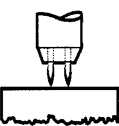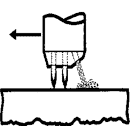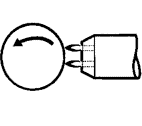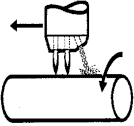There are many applications for flame or induction hardening.
Bearing Journals
Brake press blades
Bucket pins
Bushes
Cams
Cast bed ways
Chain guides
Chuck jaws
Clamps
Conveyor rails
Crushing rolls
Crane wheels
Cutting blades
Die inserts
Die rings
Drive dogs
Extruder screws
Fabrications
Feed Screws
Form tools
Gear teeth
Internal splines
Machine ways
Mill rolls
Moulding die shut-off faces
Pins
Punches
Pulleys
Rails
Robot grippers and fingers
Rollers
Rope drums
Shafts
Sheaves
Silent chain sprockets
Slew rings
Spline shafts
Spring pads
Sprocket teeth
Stamping dies
Tie bars
Toggles
Tooling
Tracks
Trim dies
Trunnion rollers
Wear pads
Wheels
There are 4 basic methods employed with flame and induction hardening.
Flame hardening uses a burner as shown below, induction hardening uses a coil.
SPOT

PROGRESSIVE

SPIN

PROGRESSIVE-SPIN

The choice of method depends largely on the material, the geometry of the part and the desired outcome. The same part, say a plain wheel made from 4140, may be spin hardened or progressive-spin hardened. If spin hardened it will have a heavier case and a lower hardness compared to a progressive-spin part.
